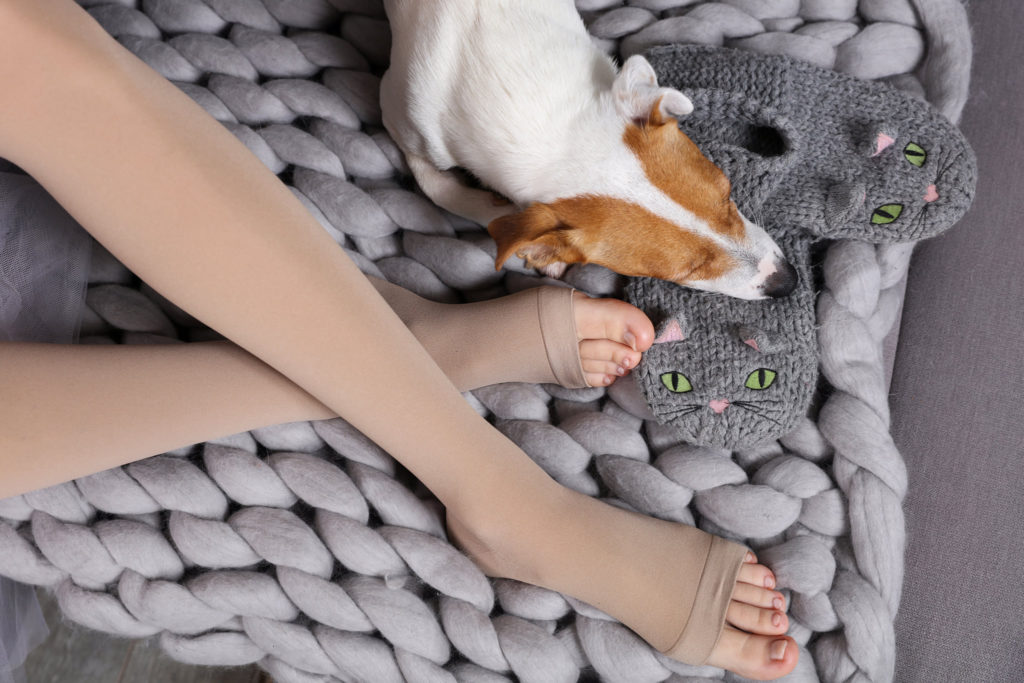What Are Compression Socks?
Compression socks or stockings are designed to encourage healthy circulation of blood from your ankles back up to your heart. Most compression socks have a constant but graduated pressure, more pressure at the ankle and less at the calf. They are snug fitting and mostly come up to the top of your calf, though some come up even higher. The idea is to prevent pooling of blood in the legs by aiding the venous blood back to your heart. This is why many seasoned travellers use compression socks for flights over four hours.
Sitting on a plane for a long period can be tough on your body, between the dry air, pressure changes, inactivity and cramped conditions. Sitting in one position for too long can cause fluid accumulation and swelling in the lower legs and increase your risk of blood clots and deep vein thrombosis (DVT). A piece of blood clot could easily break off and travel to the lungs. This is known as pulmonary embolus and can be fatal – often without warning. DVT is most often linked to air travel, but can be a risk on long car or train rides as well. Do remember – any swelling, redness, or pain in the calf can be a warning sign of a DVT. Ofcourse this happens only in extreme conditions. The idea is not to frighten you but to provide you with information that can help avoid any unforeseen medical problems. However, it is always advisable to consult your healthcare provider for the right advice specially if you have any underlying medical conditions.
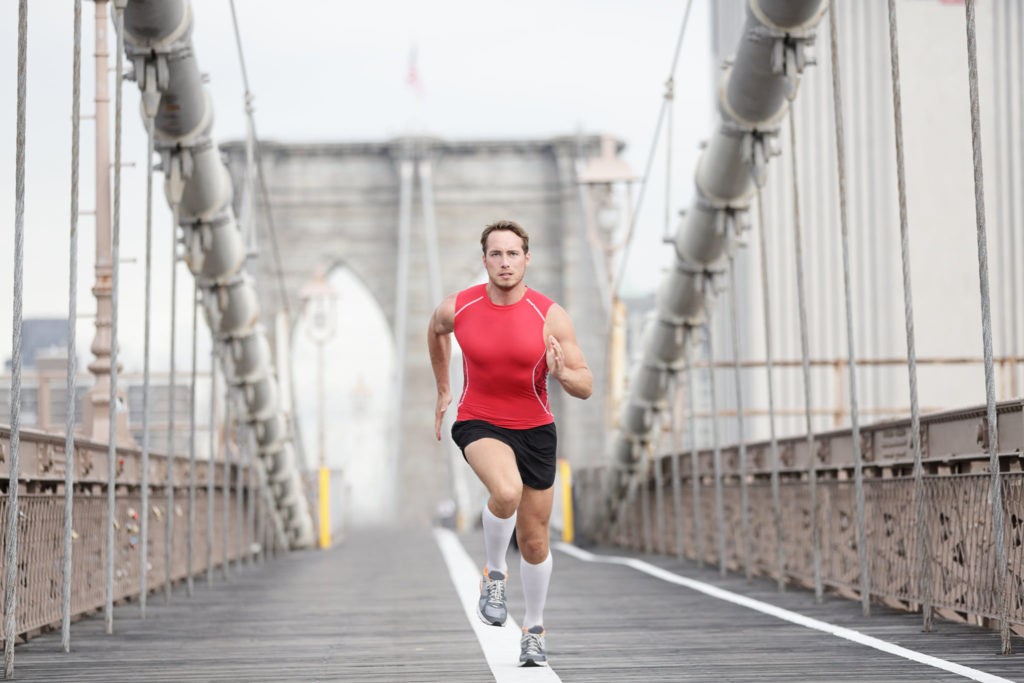
Although wearing compression socks can help reduce your risk of dangerous blood clots, you should still make sure to take other precautions against DVT on long trips. Frequent walking, standing, and stretching are imperative. Try and get up every half hour or at least move your feet and flex your calf muscles, and do avoid crossing your legs. Try to choose seats with extra legroom. Drink plenty of water to stay hydrated and avoid alcohol.
So, Should Everyone Wear Compression Socks?
All travellers can benefit from wearing compression socks, but those at higher risk for clots include: smokers, athletes who may have undergone fracture or surgery due to injury, obese people, pregnant women, women suffering from endometriosis or PMS, people with varicose veins, and people with a clotting problem.
There are situations when compression socks could be uncomfortable for people, like those with medical conditions such as open wounds on their legs, those with severe peripheral arterial disease, poor circulation, skin infections, or damage to the nerves in their feet or legs from diabetes or otherwise. These travellers should consult a doctor first because compression socks may not be ideal for them.
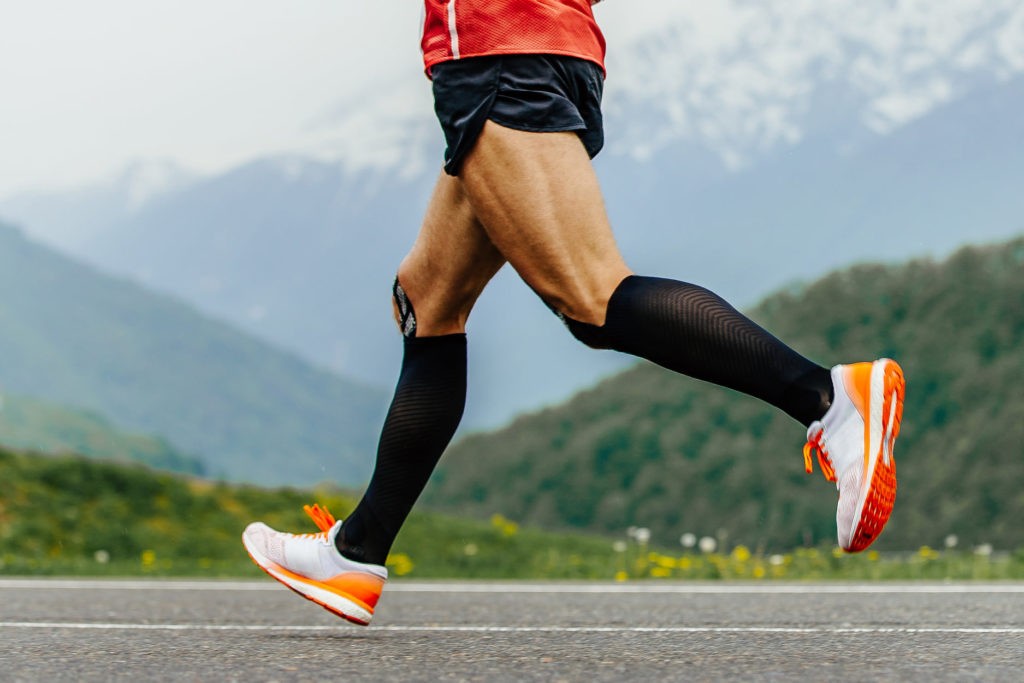
How to Choose the Compression Socks
Compression socks are very easily available and there is a plethora of them available online, at travel stores and chemists. They are calf-high, knee-high, thigh-high, pantyhose, open and close toe etc. So how do you choose?
Here are some tips:
- I recommend the calf-high ones which are easy to put on. The thigh high and panty hose varieties could get really uncomfortable on a long flight.
- Choose the ones with closed toes, as these will prevent fluid accumulation in your toes.
- Next, is the question of pressure. Medical grade compression socks are rated in mmHg or millimetres of mercury. There are usually two numbers – the pressure at the ankle and the pressure at the calf. So, if your socks read 20-30mmHg, it means that there’s 30 mmHg of pressure at the ankle and 20 mmHg at the calf. Obviously, the lower the numbers, the milder the compression, and unless you have a medical condition, its best to start with a lower compression, that’s 15-20mmHg.
- Definitely consult a size chart for your first pair. Getting exactly the right size is very, very important Once you put them on, it should feel like a gentle hug. If the socks feel too tight, then you have the wrong size and it could do more harm than good.
- Choose a material which is lightweight and breathable, you do not want to end up with a skin irritation.
- You will also want an anti-odour, anti-static pair with a cushioned heel and toe support if possible.
Here are some recommended brands you can choose from
Wearing Compression Socks
By trial and error, I have found that the easiest way to put them on is to start by holding the toes and the pulling the rest of the socks inside out. Then place your foot into the fold and roll the rest of the sock over your foot and calves. Another tip is to wear them before you leave for the airport, as trying to put them on in the confines of a plane seat is tricky.
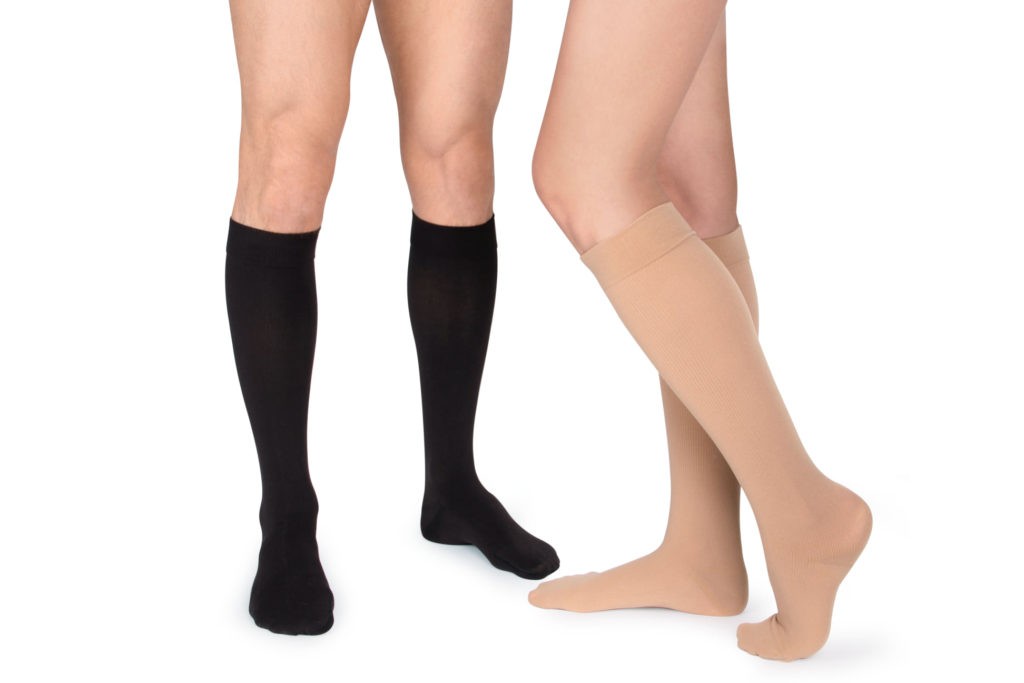
I was introduced to compression socks by a cousin from Australia decades ago, who presented me with a pair that, fortunately, was the exact right size. Over the years, I have upgraded them, and now I never ever travel long flights without them! I love the gentle pressure of compression socks, and my legs feel massaged and relaxed after a long flight. I would happily recommend them to everyone!
Hope this article is informative, folks. Happy travelling!
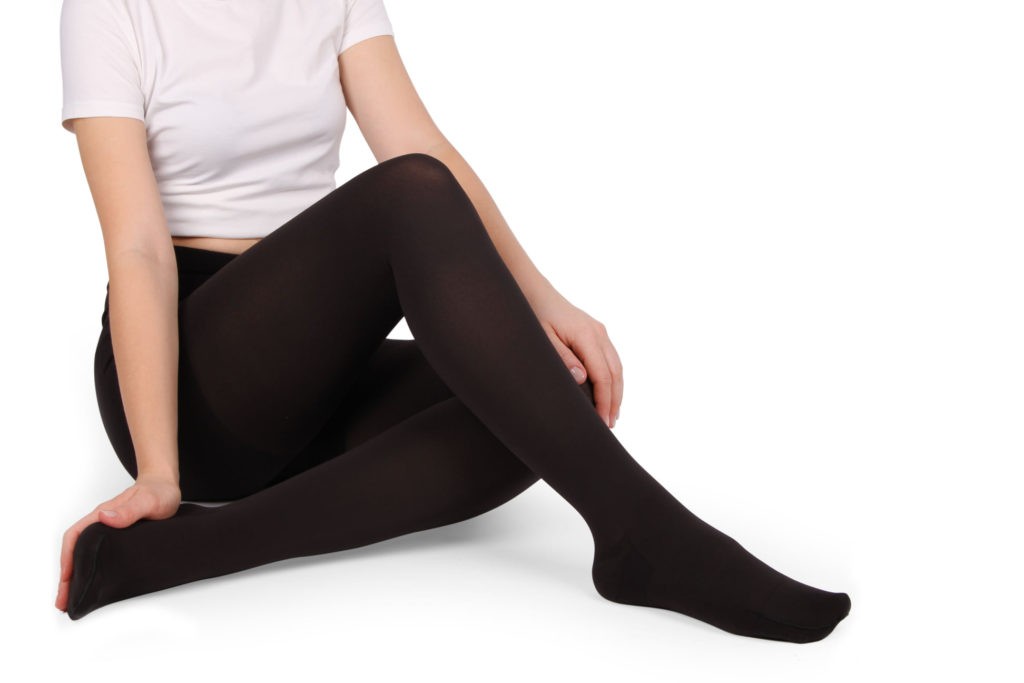
For latest travel news and updates, food and drink journeys, restaurant features, and more, like us on Facebook or follow us on Instagram. Read more on Travel and Food Network
Trending Now : TFN 2021 Guides
Lisbon Travel and Food Guide 2021
Discovering Budapest : Your Ultimate 2021 Travel Guide
A homeschooled chef even before she joined Catering College in Bombay, Christine’s gastronomic journey started with mother and grandmother. Polished with a degree and 10 years of experience in the Hospitality industry, Christine’s love of food, drink and everything gastronomic has been sharpened and honed with travel across the world. Today, she shares the wealth of her foodie experience and adventures across the world with Travel and Food Network, so look forward to much more from Chrsitine!


